The very definition of a lift is moving load upwards against gravity; but what goes up must come down. If you’re only paying attention to one half of every squat, deadlift, and press, you’re missing out on a heap of strength and stability, and likely setting yourself up for injury down the road. It’s time to stop letting gravity boss you around and tame it to help, not hinder.
When I took my first kettlebell certification back in 2006, I was an accomplished powerlifter. I already knew how to squat, bench, and deadlift. Or so I thought.
One of my major takeaways from that weekend of coaching from StrongFirst Leadership, Pavel, Brett, and Rif, was using my hip flexors—predominantly my psoas muscles—to control gravity.
Even though I was already an experienced chiropractic physician as well as a champion powerlifter, considering using my hip flexors for more than walking and running was foreign and weird, to say the least. I listened intently and what Pavel was saying made sense. He even invited me up to the front to have several people help me make space and pull myself down to the proper depth, or ‘into the hole’, as we call it.
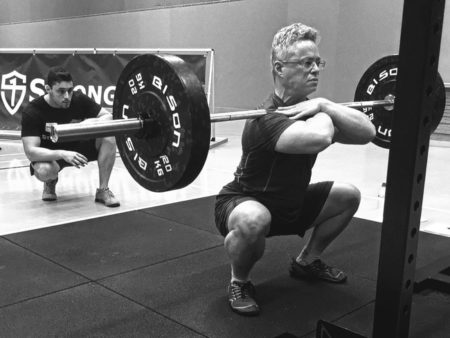
Up to that point I had been lowering my squats passively and then exploding up. This new cue was different. I was now thinking about actively pulling myself down to below parallel and then pushing the ground away on the way up. My squats now hit the sweet spot every time, under control and with intention, thanks to my hip flexors actively contracting on the descent.
Have you ever seen someone squatting and their descent—the eccentric phase—looks sloppy, followed by an ascent—the concentric part—that is even sloppier? What if I could show you how to clean that up, thereby setting up a more successful ascent? Grab some popcorn, sit down and put your learning glasses on.
Psoas Anatomy
The psoas muscle is a major hip flexor, originating on the side and front of the lumbar vertebrae and attaching to the lesser trochanter of the femur bone. Basically, it runs from your lower back to your upper thigh bone.
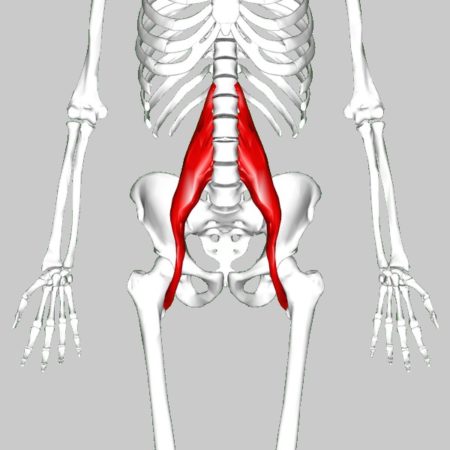
As the psoas not only helps flex the hips, but also attaches to the lumbar spine, activating them during my descent allowed my lower back to stay neutral all the way down and be ready in optimal position for the fun of fighting against the load on ascent. The result was zero ‘buttwink’, or pelvic tuck-under, one of the most common faulty patterns you will see when teaching the squat.
Pulling Down in the Squat
One of the tools we employ at our Instructor Certifications for teaching an active descent is the supine drill shown in the video below.
Now that your student has experienced what it feels like to actively pull with their hip flexors in an open-chain environment, have them stand up and try it in a closed-chain movement with their feet planted. Have them do the movement several times unloaded, then load it, whether with goblet squat, single or double kettlebell front squat, or any variety of barbell squat.
Make sure you keep the weight light so they can concentrate on proper movement technique first. Watch them from the front and the side. Observe what their spine is doing and give them feedback to ensure it remains the same shape it did during the supine drill.
Improve Your Deadlift Setup
The same active descent technique can also be applied to all squatting, pressing, and deadlifting movements.
How do you use it with deadlifting? As you descend to the bar, actively pull yourself down with your hip flexors. This conscious activation without external load is a vital part of the setup to perform a proper deadlift and helps the student immensely, especially when ‘wedging’ prior to the bar coming off the ground. You can practice with a kettlebell instead of a barbell if required.
If you have a student new to barbell lifting, I would strongly suggest adding this concept a few weeks into their learning deadlift technique. This allows them to become comfortable with the basic movement first. When you add this part, it will take their technique and lifting to a new level.
Pulling Down with the Lats
For the upper body, we have the wonderful latissimus dorsi (‘lat’) muscle which goes from the upper arm down to the base of the spine via the thoracolumbar fascia. This huge muscle is also a fantastic stabilizer of the spine when used properly.
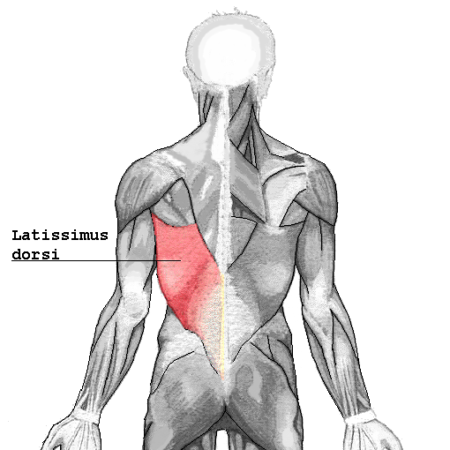
The lats help the upper body during the eccentric aspect of any pressing movement, similar to how the psoas functions with the lower body. The barbell and kettlebell military presses and the bench press are three exercises that come to mind.
Adding Control to your Press
During the bench press, as you are lowering the bar, actively pull the bar down to meet your chest. The more you control the bar on the descent, the more accurately you can put it where it needs to go on your chest. Remember, the bar is coming down regardless of what you do, whether you control it or not. I say to control the bar, control gravity and you can better control the outcome of each rep.
The same thing happens in the military press. While on the descent from above your head, the bar is coming down no matter what. Controlling the bar not only assures you of a better placement of the barbell on your upper chest but also makes sure that your abs are contracted, further helping you press the next rep back up.
Activating Abdominals
When we teach the drill in the video above at the SFL Barbell Instructor Certification, the effect usually surprises the student. How did their abs turn on at the same time as their lats were active on the descent? Through the intimate relationship between the abdominals, the lats, the thoracolumbar fascia, and a few other structures, the abs respond when the lats are contracted strongly.
The same relationship applies to the psoas and abdominals through a slightly different mechanism. These processes are very similar to what happens to your rotator cuff when you crush the handle of the kettlebell. Try pressing the kettlebell with a soft grip versus a crush grip. What did you see and feel was different?
While you are learning the active descent, move the barbell or kettlebell slowly. The speed helps your neuromuscular system to create and set the motor engram properly. As you spend more time doing this, your rate of descent can increase until you reach moderate speed. At that point, don’t go faster as you will get sloppy with the movement. This rule applies equally to all the squat, deadlift and press variations discussed.
Command and Control
Learning how to actively pull down with the upper or lower body isn’t difficult, but it will take repetition and time. Be patient and it will eventually become second nature. You will also need to take some weight off the bar to get this ingrained in your brain. A by-product of this is you will also become stronger, both mentally and physically.
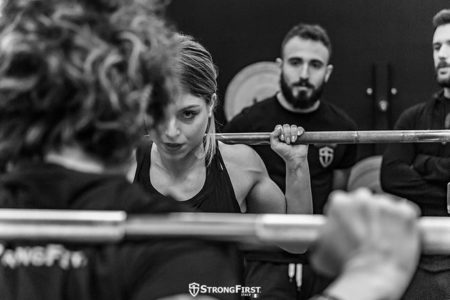
Controlling the eccentric also helps to teach someone the most effective and safe technique of strength training across the board. You can even use this method to teach bodyweight exercises too. The pushup, for example, or the pull-up, or even the pistol will all benefit from this approach.
When I am teaching a student to control gravity, I tell them they have two choices: either you control it or it will control you. I choose to control gravity, with strong results. What will you decide?
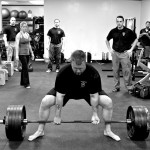
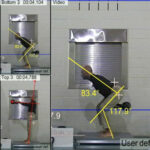
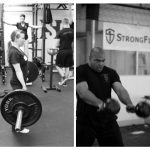
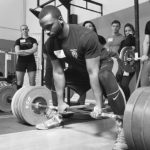

Thank you for this article.